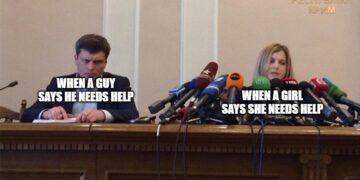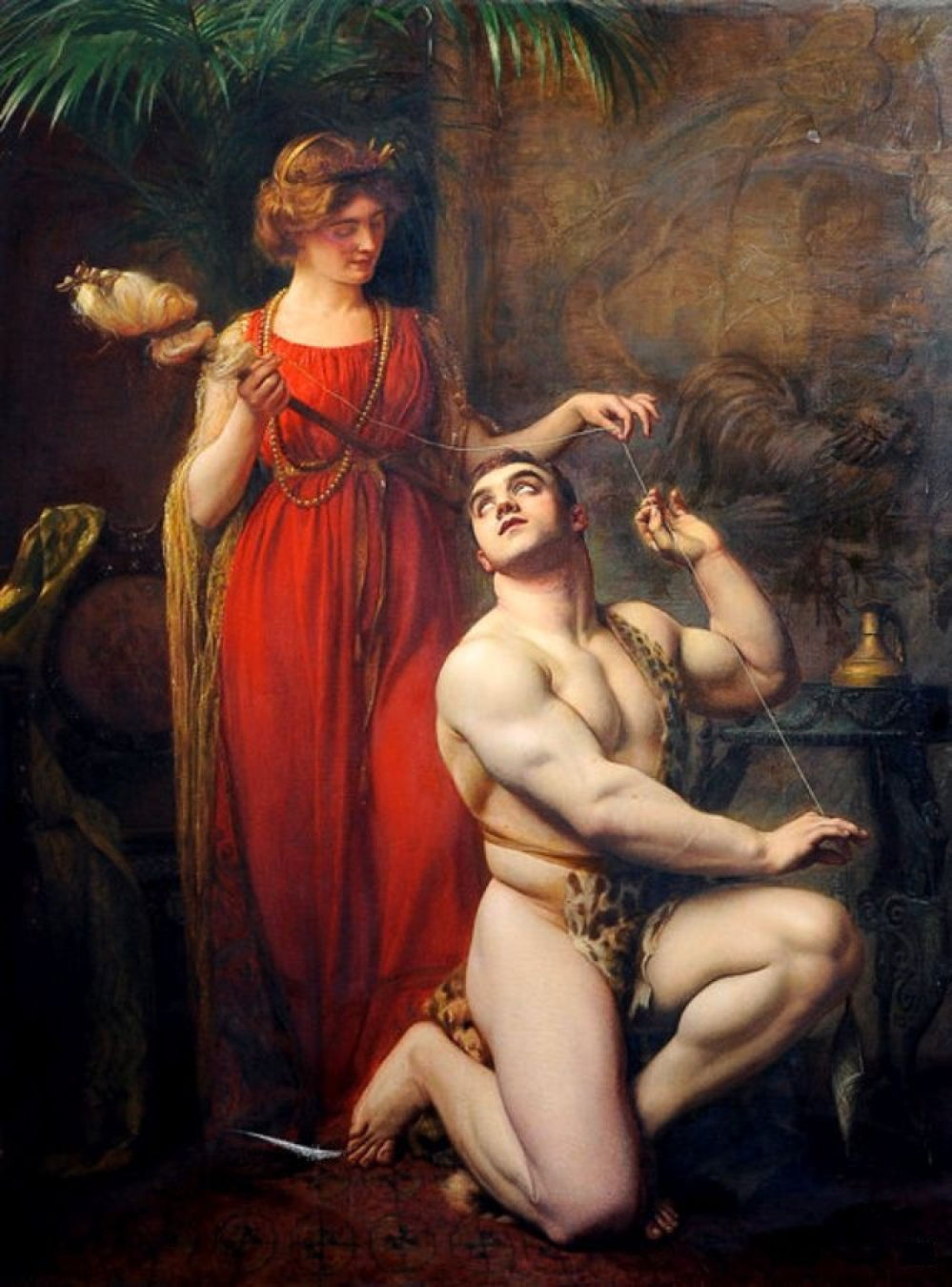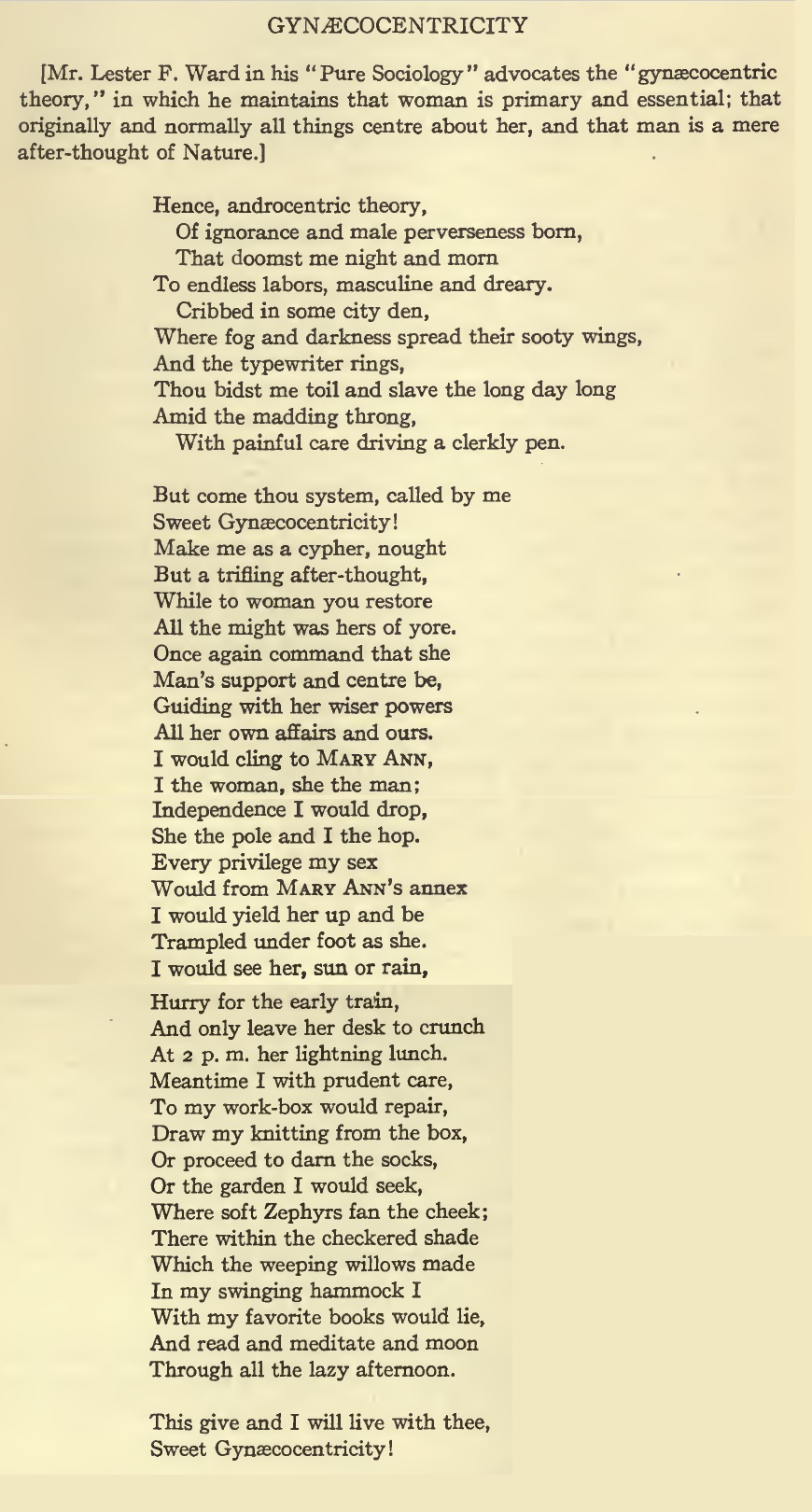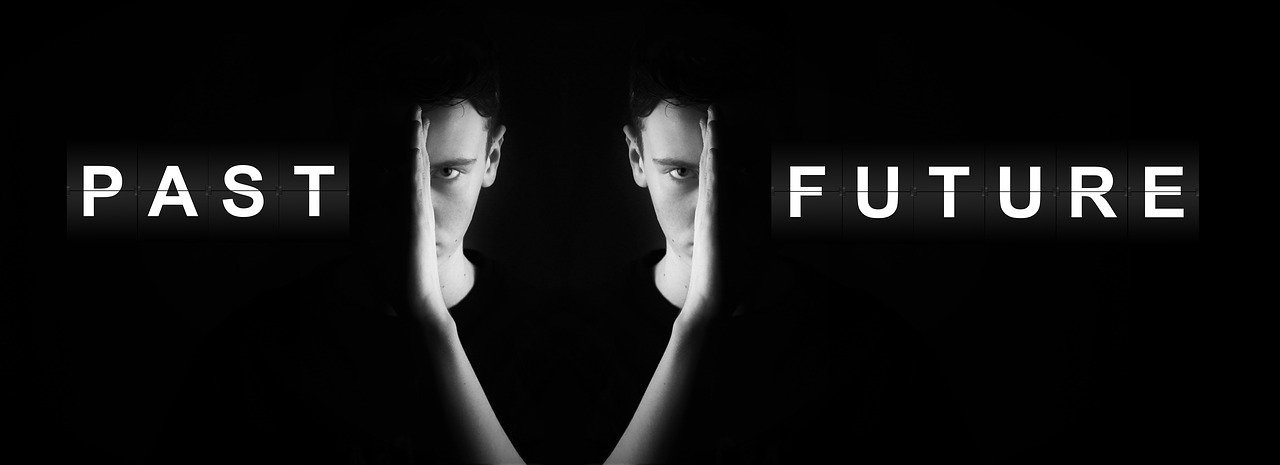What Is Good For The Genes And Society Vs Pedestalising Women
There is a common misconception that what is good for women is good for the propagation of the genome and society. That pedestalising women is interchangeable with maximising the copies of the genome a lineage leaves behind and the survival of society. The reality is far more complicated. This misunderstanding leads to incorrect and frankly bizarre assertions that women are in a biological sense more valuable than men. That a population can only survive if women are protected and prioritised above all other concerns.
The truth is that whilst women have an important reproductive role in giving birth and caring for small infants, this function is merely one activity in a vast web of activities that have to occur for genes to be successfully passed on from one generation to the next. A community can have as many women as it pleases and as many children as it likes and the reality is that it will all amount to precisely nothing in evolutionary terms if basic survival requirements are not addressed. The reality is that the reproductive role of women whilst important, is no more important than many other activities and hardly the overwhelming priority it is presented as.
Gynocentrism is by its very nature a one-dimensional fixation on female well-being. It is an absolute and unconditional pedestalisation of women. All other priorities and needs for society are secondary. The myopic fixation on prioritising female well-being above all else, is actually detrimental to the continuation of a society and passing on the genes. Society is sustained through a complex balancing of priorities. The continuation of the genome itself similarly relies on a complex balancing of priorities.
Life history theory[1] sets out in detail how life strategically allocates finite time, energy and resources towards various activities in an optimal balance. Reproduction and mating are merely two activities. There are dozens of other activities life spends more time, energy and resources on. Some organisms like insects and bacteria have a fast life history strategy, invest little in survival and development and reproduce hundreds or even thousands of offspring. Other species like humans and large vertebrates, have a slow life history strategy and invest substantially more in their own survival and development and reproduce comparatively few offspring.
Humans are a social species and require a complex social system to perpetuate themselves. This social system fundamentally requires a balancing of priorities. The survival of society and also our genetic survival, depends on achieving the correct balance. Gynocentrism destroys this balance. The plummeting fertility rate in developed countries and its connection with gynocentrism has been discussed before by Paul Elam and Peter Wright in their video Chasing The Dragon.[2]
When society puts men down to lift women up, family formation and fertility rates plummet. That is what the hard data tells us. The economic and social conditions for society also begin to decline (as we can see from the effects of fatherlessness and the boy crisis in education for example) and this in turn directly impacts the reproductive prospects of future generations and their children. That is the gynocentric death spiral for society.
I don’t expect this article to change the minds of gynocentric acolytes that insist on propagating the idea that pedestalising women is what nature intended. I expect the consequences of gynocentrism to eventually destroy the societies that produced it. This article hopefully will make it easier for some to understand why society is in decline in part as a result of gynocentrism.
Karen Straughan did an excellent video[3] a decade ago on how our gynocentric society will slowly destroy itself. It is not just the social and economic effects that she discussed we have to worry about, it is now the substantive demographic shortfall in births combined with these effects that spell death for society. A population with a lack of youth cannot sustain an aging population and ultimately replace the people it loses.
A gynocentric culture is a culture of death, not a culture of life. In the end societies that pedestalise women die out.
Gynocentrism is not an evolutionary adaptive set of behaviours. It does not increase the prospects of society or the number of copies of the genome, it reduces them. If gynocentrism were adaptive you would expect this insanely gynocentric culture to be bursting at the seams with children and record fertility rates and yet we see the opposite. If gynocentrism is so adaptive, where are all the babies?
If gynocentrism were adaptive we would see record social and economic progress completely independent of debt from empowering women and marginalising men and yet we see the opposite. We see stagnation, decline, crashes and bubbles from fake financial growth and an ever increasing reliance on debt year by year. If gynocentrism were adaptive we should see obvious indications of that in our gynocentric culture and yet we do not.
Gynocentrism by its nature is unconditional and absolute, it will always inevitably grow to the very extremes until the society that produced it collapses under the weight of it. Gynocentrism is like cancer, it is a pathological growth that disrupts the functional balance of society.
Just consider the negative net social and economic impact of modern divorce and family court on family formation and on the fertility rate of current adults and also the children coming from broken families. Consider the chilling effect of metoo# on relationship formation and the net effect of the boy crisis in education impacting the future prospects of men and women in finding suitable partners to have children, maintain stable relationships and raise children.
It may take decades or centuries, but in the end gynocentrism destroys the foundations of the societies that give rise to it. The family itself is sacrificed for gynocentrism, one of the very building blocks of civilisation. In the past civilisation collapsed faster from other destructive forces before gynocentrism itself could contribute to the implosion. Technology has prolonged the decline of civilisation to such a degree that now social factors like gynocentrism, are directly contributing to the demographic implosion and fragmentation of society.
Gynocentrism Versus Ancestral Pragmatism
Conflating gynocentrism with the protection of women in circumstances where they are objectively in greater danger and are objectively more vulnerable, demonstrates a critical misunderstanding of what gynocentrism is. When you protect women over men merely because they are women, when you prioritise their well-being merely because they are women, then that is gynocentrism.
When you prioritise women’s protection and well-being because they are objectively in greater need of that protection and concern, then it is the physical reality of the situation steering the decision and not some deluded notion women are somehow more deserving of our concern simply because they are women. This same objective reasoning can guide the reverse prioritisation of male well-being where it is warranted.
This simple distinction is what so many fail to grasp. In my article on Diagnosing Gynocentrism[4], I discussed this important distinction in detail. I gave the example of a woman seriously injured in a car accident and the man being only mildly injured. Is it gynocentrism to help the woman first? No. Would it be if the man were seriously injured and the woman only mildly injured? Yes. Note the difference. So when we go back and examine our prehistory and start projecting what we are observing in our modern gynocentric culture back onto the past, we might want to consider the blind psychological fixation on women that drives gynocentrism.
It is certainly the case that in our past there have been numerous instances where women have been objectively in greater need of protection than men given our physical sex differences and the harsh environment’s we often lived in. It is also the case though that such societies could not afford to inefficiently allocate time, energy and resources in such a way as to pedestalise women. The social concern for women in other words had to be contingent on it being for the greater good of the community and grounded in the priority to survive. Blindly pedestalising women wastes time, energy and resources that many past communities had in short supply.
Ultimately it was the greater good of the community and the drive to survive rather than a myopic concern for female well-being, that drove much of the customs and practices seen in our prehistoric past and past civilization’s. That reality is also the case in respect of many of the traditions and laws regarding the roles of men and women in past societies.
It was out of pragmatism in the face of a harsh environment before modern technology rather than blind gynocentrism, that resulted in women in certain instances garnering greater protection than men and men being assigned to more physically dangerous and demanding tasks like war. I am not suggesting such a division was ideal, I am suggesting that out of survival and what actually worked such divisions were undertaken.
Sometimes it was to women’s advantage and other times it was to men’s advantage. We can argue which sex had it worse for hours, but the reality these divisions were not made to favour one sex over the other, or pedestalise women or men, they were made to keep society going and keep people alive.
No society can last without having the greater good of the society and the survival of society in mind as the ultimate check on the misallocation of time, energy and resources. Gynocentrism is a product of a culture that has abandoned such a fundamental balance and that is why inevitably gynocentrism is in part a driver of the collapse of society itself.
Gynocentrism does not prioritise the greater good or the survival of society first, it prioritises female self-interest and well-being at all costs, absolutely and without compromise. The future of society be dammed! The slogan, “The future is female” might as well say the future is death. There are eventually no people and a collapsed society in such a future, based on the data we have and the demographic and socioeconomic trends we are observing.
Male Sacrifice Alone Is Not Evidence Of Gynocentrism
Related to the conflation of gynocentrism with the greater good, is the notion that sacrifice is the sole domain of men and that such sacrifice is somehow proof men are disposable. Disposability infers that men are of little value and are easily replaced. Disposable items are considered disposable for that very reason. Again the reality is far more complex than suggesting men are biologically disposable because they sacrifice their lives and therefore gynocentrism is adaptive.
A male that reproduces and survives will reproduce more than a male that reproduces and then dies. The male that survives to reproduce multiple times will always be at an evolutionary advantage compared to the male that reproduces once and then dies or dies and does not reproduce at all. Over time the man that survives dominates the gene pool. The simple reality is that sacrifice is incidental to men passing on their genes rather than a requirement and that men losing their lives, is a cost that the forces of natural selection select against and minimise.
Yes sexual selection on males does occur and yes that can select for men to adopt traits and behaviours that improve their reproductive fitness at the expense of their long-term survival. However even under sexual selection, males that evolve variations on traits that maintain the same reproductive fitness without incurring the cost of reduced survival, will be at an evolutionary advantage.
Males that get the same job done at a lower cost to themselves, win the evolutionary race. It is basic efficiency that is selected for even under sexual selection. It is not only just whether you reproduce or not that matters, but how efficiently you pass on your genes. Ultimately sacrifice whether it is attributed to sexual selection or not, is an evolutionary cost that selection attempts to minimise even under sexual selection pressures.
Sexual selection does not have to come at the cost of reduced survival for sexual selection to produce traits that the other sex selects for. Males and females can develop traits through sexual selection that have no effect on survival at all or even enhance survival.
Contrary to popular opinion, sexual selection does not override natural selection in the sense of eliminating it, sexual selection is present alongside natural selection. Sexually attractive traits matter little if males with them fail to survive to reproduce or males that survive longer outbreed males with such traits. Ultimately the two forces of selection are in a certain dynamic equilibrium with each other and the eventual evolutionary solution can be the development of traits that satisfy both evolutionary forces or that find the optimal balance between them.
Comparing the forces of sexual selection on human males with male insects etc is fraught with issues. There is a very big difference between the selective dynamics at work on organisms like insects with relatively short lifespans and developmental periods compared to the human male and that demonstrate much higher levels of sexual dimorphism than humans.
Drawing long bows with associating examples of male insects and peacocks with human males is emblematic of the problem of bio-gynocentrism[5] selectively framing biology through a gynocentric lens to support a preconceived narrative and omitting inconvenient facts that do not support such a narrative.
Sexual selection in humans is not just limited to males either, there are numerous examples of sexual selection acting on human females too. Some of these examples actually can reduce female survival and increase their fertility, just as sexual selection does sometimes in males. Of course that won’t be discussed by ideologues set on arguing men serving women is what nature intended, because it does not fit the narrative.
Sacrifice itself is not indicative of disposability either. Valuable people and valuable things can be sacrificed. In fact sometimes the most valuable people sacrifice the most for society and their sacrifice has an impact that lasts centuries and in some cases thousands of years.
Men and males more broadly, are often highly selective on whether and precisely when and how they risk their own lives. If men are biologically programmed to just drop what they are doing, risk their own safety and help a random female stranger, why is it that when they don’t there seems to be a need in our gynocentric culture to socially reinforce this expectation on men and speak up when they don’t throw themselves in harms way? Seems kind of odd to me!
Where was the gynocentric instinct recently on the New York subway[6] for example? Gynocentrism is not hardwired in our brains, it is socially learned and socially enforced and we have clear examples in our society of precisely where that social enforcement is coming from! Gynocentrism plays on biological drives and manipulates them, it is not itself a hardwired instinct. It is rather amusing to see the aggrieved entitlement[7] that gynocentrism produces when it is denied, as more and more men are slowly waking up to the lopsided gynocentric dynamic in society and refusing to go along with it.
Truly disposable creatures in contrast to human males, exercise little discretion when it comes self-sacrifice. They are not picky. There is no thinking involved in such self-sacrifice from creatures that are truly disposable, just reflexive biological processes from relatively simple forms of life that invest very little in their own survival, have short lifespans and quickly and easily replace themselves.
Society, families and partners lose a great deal socially and economically when men die. It also takes decades to replace them and raise the next generation of men. Losing men has a cost and marginalising men has a cost. A considerable cost. Losing too many men and marginalising men, has the effect of destroying societies primary capacity to support its own survival and long-term prosperity.
Consider the multitude of activities men have undertaken in our prehistory right up until the present day. Consider the net result of losing substantial numbers of men needlessly. Consider the net effect of our society marginalising whole generations of men. It is not a coincidence that our economies have increasingly relied on unsustainable levels of debt to keep them going at the same time men have been increasingly marginalised in society.
Societies that make the most of their men and minimise the wasteful loss of men, will outperform societies that don’t. Armies that lose less men win the wars. Sacrifice cannot always be avoided, acknowledgment of such a reality does not mean avoidably losing men needlessly is something our society can accept or sustain.
It is worth noting that sacrifice is not purely the domain of males either. Females do indeed sacrifice for their offspring and do die in the process of reproducing on occasion. Death in childbirth was significantly more frequent up until relatively recently and long-term physical complications even more so. Mothers dying in the process of looking after their children and protecting them were not uncommon either.
Not every female has to live for their offspring to survive. The offspring can be cared for by the rest of the community and by other women if they are still in infancy, if the mother dies after birth or whilst the children are young. Pregnancy does not have to be perfect either. If most women live to give birth a certain incidence of death can persist and it has despite millions of years of evolution and selection.
Not every female even has to live to reproduce for a community to replace itself, just the bare minimum number of women that is required need to survive. Women like men can sacrifice themselves for their community in ways that go beyond giving birth to children and caring for small infants. Inclusive fitness[8] applies to women as well and not just men.
Women like men can further their genetic interests by protecting and looking after related kin and genetically similar individuals in their community. Women like men can further their genetic interests by contributing to society in ways that improve its prosperity without reproducing and this can directly improve conditions for their relatives and genetically similar individuals and thereby improve women’s reproductive success indirectly. Women can contribute in these ways, die in the process and still pass on their genes without reproducing themselves, just as men can. Sacrifice is not the sole domain of men.
The Reductive Lens Of Gynocentrism
The problem with gynocentrism is that it is by its nature reductive. Everything comes down to the female and pedestalising the female. Gynocentrism can distort people’s perception and understanding of biology itself. That is bio-gynocentrism. People can look at a group of whales or primates and see males on the outside and females and their offspring on the inside and conclude that is gynocentrism. No other explanation enters their minds.
The possibility that males might be on the perimeter not because they are less valuable, but because it best serves their genetic interests to protect their territory or guard against male rivals, is not considered. Even when such explanations are considered, they are ironically further explained as proof men are guarding the more valuable female as opposed to the possibility men are doing so for their own direct genetic benefit and nothing more.
Any further discussion is a waste of time. For the acolytes of bio-gynocentrism the female and reproduction is everything and they cannot be convinced otherwise. The gynocentric brainwashing by our culture is complete. Insect analogies are applied to humans and female mate choice is spoken of with an almost religious zeal and hyped up as some omnipotent force. The plethora of evidence and biology[9],[10],[11] demonstrating human males are a bit more complicated than male insects and that male mate choice, female intrasexual competition and mutual mate choice in humans is highly significant, is either ignored or downplayed.
It has never dawned on them that there is evidence all around us on what happens to genetic success when gynocentrism pervades the culture. The population does not breed and it dies away. That is the fate of our society if trends continue.
Gynocentrism Is Maladaptive
Gynocentrism is a maladaptive expression of our biology, it reduces reproductive success and the number of copies of the genes the community leaves behind. It destroys civilisation. Look at any modern developed nation that pedestalises female interests above all else, it is the same pattern. We did not evolve for gynocentrism to be some biological norm and that evidence again is all around us.
Sadly I think it will take the collapse of society for future generations to come to this realisation and how dysfunctional gynocentrism truly is. Females are merely one component in a much broader biological system that perpetuates itself. That applies especially to humans. Female well-being is hardly everything. Time to see the forest through the trees. We can treat women fairly and respectfully without deifying them.
References:
[1] https://www.nature.com/scitable/knowledge/library/life-history-evolution-68245673/
[2] https://www.youtube.com/watch?v=VygKQV-hEpY
[3] https://www.youtube.com/watch?v=w__PJ8ymliw
[4] https://avoiceformen.com/featured/diagnosing-gynocentrism/
[5] https://avoiceformen.com/category/bio-gynocentrism/
[6] https://www.youtube.com/watch?v=44-IpvZRfAw
[7] https://avoiceformen.com/featured/aggrieved-entitlement-womens-reaction-to-temporary-loss-of-chivalry/
[8] https://en.wikipedia.org/wiki/Inclusive_fitness
[9] https://www.stevestewartwilliams.com/publications/Stewart-Williams%20&%20Thomas,%202013.pdf
[10] https://www.psychologytoday.com/files/attachments/33284/stewart-williams-thomas-2013bpi.pdf
[11] https://www.stevestewartwilliams.com/publications/Stewart-Williams_2020_peacocks_or_robins.pdf











